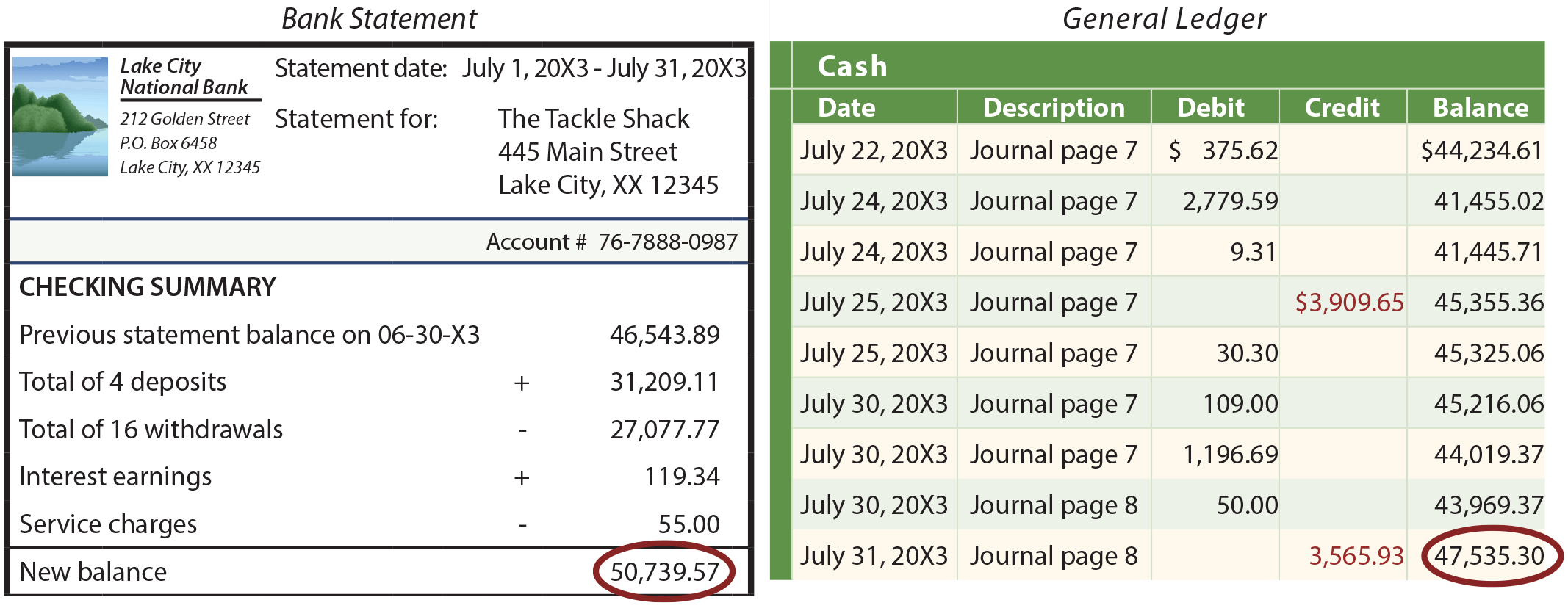Correcting Bank Errors To Reconcile Account
Posted By admin On 11.09.19Errors in Bank Statement. Errors or omissions by the bank can lead to a difference between the balance as per bank statement and the balance as per cash book. For instance, bank may incorrectly record the deposits or withdrawals of another account into the company's bank account. Likewise, a deposit or withdrawal be erroneously recorded twice.
- Correcting Bank Errors To Reconcile Account Form
- Programs To Reconcile Bank Accounts
- Correcting Bank Errors To Reconcile Account Number
- Manual Reconciliation Matching If you are reconciling bank statements manually, the Reconcile Bank Statements window retrieves all available statement lines and transactions that match your selection criteria. Then you can decide how you want to reconcile the correction entry. In the reversal method example above, you reconcile line 20 with line 10.
- Working with Bank Errors Contents About Working with Bank Errors Defining Bank Errors Viewing Bank Errors Clearing Bank Errors About Working with Bank Errors Bank Reconciliation is the method used to reconcile your bank statement within PCLawTM. Bank Reconciliation aids in reconciling your bank statements to your PCLawTM bank journals.
Related Articles
- 1 Tips to Avoid Checking Account Fees
- 2 How Is a Material Cash Overdraft Reported in a Balance Sheet?
- 3 Reconcile Payable Sales Tax
- 4 Convert Bank Deposits to Revenue in Accounting
Each month your bank sends you statements that detail the transactions in your company's bank account. You need to reconcile these statements to your ledger's cash account on a monthly basis. The statement from your bank includes bank fees, returned checks and other information that you will not have access to without reconciliation. You may risk running your account into the negative if you fail to reconcile the bank statement to your ledger each month. One of the keys to this process is to post journal entries that adjust the balance of your ledger account accordingly.
Reconcile Bank Statement Balance
1.Chimera crack free download 6 25. Note the ending balance of the bank statement. Add any deposits recorded in your ledger that do not appear in the statement. For example, if the ending statement balance is $18,923 and your general ledger reflects $5,240 in deposits that do not appear on the statement, the revised balance equals $24,163.
2.Reduce the statement balance by any checks that cleared after the ending date of the statement. For example, if your revised balance equals $24,163 and you have $2,847 in checks that cleared after the statement, your adjusted balance equals $21,316.
3.Correcting Bank Errors To Reconcile Account Form
Account for any errors in bank postings compared to your ledger. For example, if your ledger reflects a payment of $83 but the bank recorded it as $80, reduce the statement balance by an additional $3, which equals $21,313.
Reconcile Ledger Activity
1.Pull the balance of the cash account from your general ledger. Reduce that balance by the amount of the bank fees and service charges. This includes NSF fees, monthly service fees and check printing charges. For example, if your ledger cash balance shows $21,238 and your bank statement shows a $19 monthly service fee and a $25 NSF fee for a returned customer check, your adjusted balance less fees is $21,194.
2.Increase your ledger balance by the amount of any interest deposits and notes receivable payments recorded by the bank. If your bank pays you $119 in interest payments, your cash account balance equals $21,313.
3.Verify that the ledger reconciliation balance matches your statement reconciliation balance. Review each line of your statement activity and compare each transaction to your ledger detail for any calculation errors.
Creating Adjusting Entries
1.Create a journal entry to recognize all of the bank service fees. For example, if your bank imposes a $19 service fee, debit the bank fees expense account $19 and credit the cash account $19.
2.Programs To Reconcile Bank Accounts
Post your interest credit received from the bank as a debit to your cash account and a credit to your interest revenue ledger account.
3.Post returned check fees, NSF fees, to your accounts receivable account along with the amount of the check that was returned. Debit your accounts receivable account and credit the cash account. Your bank charges your account for these funds, and you must then collect them from the customer, making it a reduction to cash and an increased receivable.
4.

Adjust your cash balance for any notes receivable that your bank collected. Debit your cash account for the amount of the note, then credit the notes receivable. If you pay a bank fee for the collection, debit cash for the amount of the note less the bank fee, then post the amount of the bank fee to your bank fees ledger account. For example, if your bank collects a $2,000 note and charges you a $60 fee, post $1,940 to your cash account and $60 to your bank fees account.
References (2)
About the Author
Tara Kimball is a former accounting professional with more than 10 years of experience in corporate finance and small business accounting. She has also worked in desktop support and network management. Her articles have appeared in various online publications.
Correcting Bank Errors To Reconcile Account Number
Photo Credits
- Jupiterimages/Photos.com/Getty Images
Choose Citation Style
